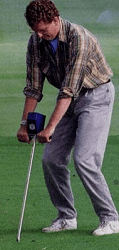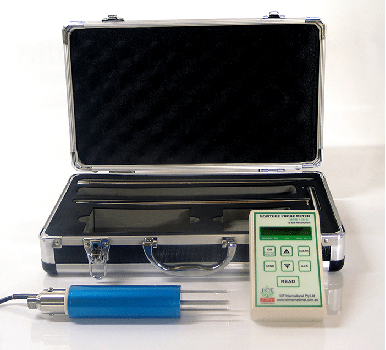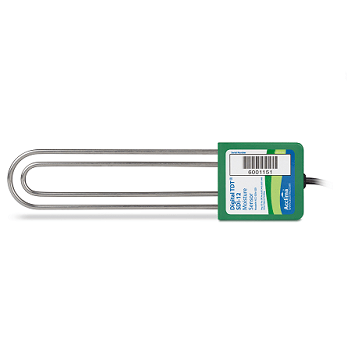Soil moisture sensors and how they work!
Soil moisture sensors and how they work! |
 | Soil moisture meters are an effective, versatile and quick method for establishing moisture content in the field. Water content can be measured directly by establishing the different in weight before and after drying a soil sample. The downside of this process is that is destructive and slow (2 days minimum), it also does not allow for making multiple repetitions at the same locations. Whereas indirect (soil moisture meters) estimate soil moisture content by a calibrated relationship with another measurable variable. In this article we will cover the types of sensors available from Instrument Choice for indirect measurement, the methods they use along with the advantages and disadvantages. | |
The types of sensors we supply At Instrument Choice we offer a wide array of soil moisture meters and sensors and the types we supply include capacitance, standing wave, and TDT sensors. The relevant sensor types are covered below: Capacitance: Capacitance sensors use capacitance to measure the dielectric permittivity of a surrounding medium. When connecting this capacitor (made of metal plates or rods imbedded in the soil) together with an oscillator to form an electrical circuit, changes in soil moisture can be detected by changes in the circuit operating frequency. This then gives a moisture content within the soil. Standing Wave: Uses the standing wave principle to indicate the ratio of two or more substances forming a body of material, each substance having a different dielectric constant (Ka). The moisture measurement of the material is based upon the fact that in a water:soil:air matrix, the dielectric constant is dominated by the amount of water present. Then the soil water content can be measured exactly because changes in water content of the soil result in changes in the dielectric constant of the soil. TDT (Time Domain Transmissometry) Sensors: These sensors measure the permittivity of the soil by sending an electromagnetic signal along a waveguide and measuring the propagation time of that wave. This propagation time depends on the soil dielectric properties, which are mainly governed by the water content of the soil surrounding the probes. The sensor can then provide accurate apparent permittivity measurements, which are then used to establish soil moisture. Capacitance Sensors: Advantages: -Can be connected to a range of DC loggers (DC Output signal) -Relatively inexpensive when compared to other measurements -Accurate after specific soil calibration Disadvantages: -Only covers a small sensing area -Requires good contact between the soil and the sensor -Installation requires care to ensure there are no air gaps -Larger sensitivity to temperature, clay content and air gaps than other sensor types Standing Wave Sensor: Advantages: -Very accurate with calibration -Larger measurement zone of influence than capacitance probes -Not affected by salinity unless it is greater than 9dS/m Disadvantages: -Higher initial purchase cost -Much longer life span from the sensor TDT Sensors: Advantages: -Larger sensing volume than other types of sensors (0.7 to 6L) -Are relatively low cost due to standard circuitry Disadvantages: -Reduced precision due to the generated pulse being distorted during its transmission -Need to be permanently installed
-Soil needs to be significantly disturbed during installation
Our most popular meter/sensor of each type Capacitance Meter: -Ideal for Landscape managers, irrigation consultants and farmers
-Has scales for clay, loam and sand
Standing Wave Sensor: -Ideal for sand stockpiles, and is accurate in virtually all soil types
-Has inbuilt datalogging capabilities
-Will provide years of service
TDT Sensor: -Large sample area
-No maintenance required
-Remains stable as soil temperature changes
| ||
See our other newsletter articles here!
Contact our expert scientists now to get the right meter or data logger to suit your needs and discuss your project.
Phone: 1300 737 871
Email: [email protected]



